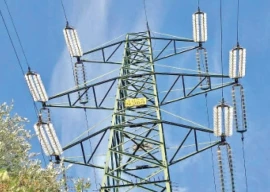
At least 92% of the 154 monitored government girls’ primary schools in 84 districts in February were without janitorial staff and about 60% did not have peons and security guards, a Free and Fair Election Network (Fafen) report said.
The report released on Sunday revealed that the administration of 57 schools withheld information about the appointment of support staff. However, in schools that divulged information, a 10% average vacancy rate was observed.
As for teaching positions, the average vacancy rate was 9% in 142 schools that shared information.
The average teacher-student ratio of 1:34 in the monitored schools appeared to be satisfactory.
A regional breakdown showed that the lowest number of students per teacher (21) was in a school in Islamabad Capital Territory (ICT). Balochistan, Sindh and Punjab followed with 27, 30 and 35 students per teacher respectively. However, in Khyber-Pakhtunkhwa (K-P), this number was 41 while in the Federally Administered Tribal Areas (Fata) it was 53 – higher than the government-set limit for primary schools which is 40 students per teacher.
More than half of the schools lacked playgrounds and 51 had no provision of clean drinking water. Furthermore, 50 schools did not have proper seating facilities for students while at least 75% of the monitored schools did not have staffrooms for teachers. On the other hand, 43 schools lacked electricity connections and classrooms of 56 schools had no fans.
On a positive note, 95% schools were housed in proper buildings and 91% had boundary walls. The condition of classrooms was also satisfactory as more than 80% of the schools had classrooms that were clean, well-lit, had black or white boards and chairs and tables for teachers.
In line with the government’s policy, all the schools except for two in Punjab and one in Sindh were providing free textbooks to students.
Government supervision was observed to be quite low. During November 2011 to January 2012, only 79 visits were made by elected government officials to the monitored schools.
Among elected representatives, only one visit was made by a Member of Provincial Assembly while two by other elected representatives. Executive District Officer for Education visited 28 schools while 48 visits were made by other government officials. Most of these visits were routine monitoring visits while some were made for the purpose of supervision and checking the attendance of students and teachers.
Published in The Express Tribune, April 17th, 2012.
COMMENTS (1)
Comments are moderated and generally will be posted if they are on-topic and not abusive.
For more information, please see our Comments FAQ













































I wonder if technology can help here vis a vis biometric attendance and automated video surveillance in classrooms with a centralized record keeping. Its actually not that expensive especially in the long run, with possibly great benefits.